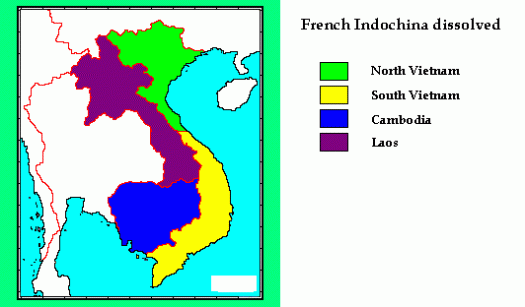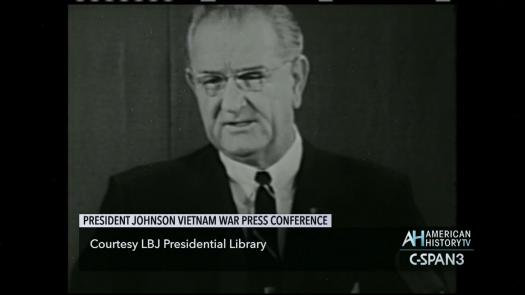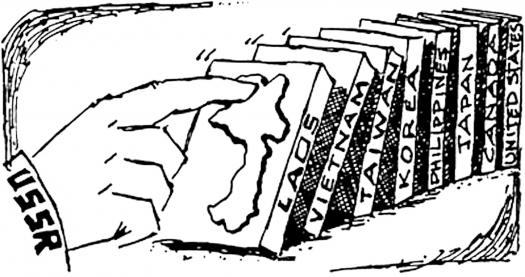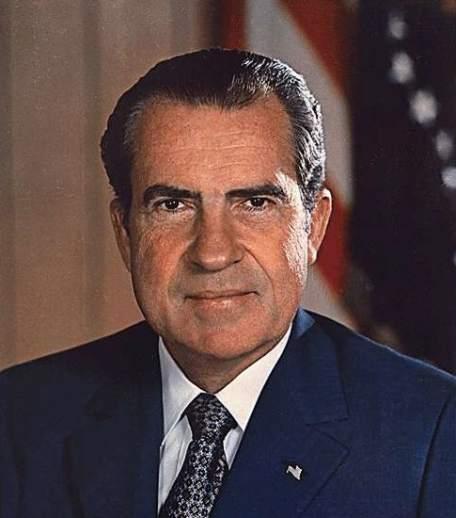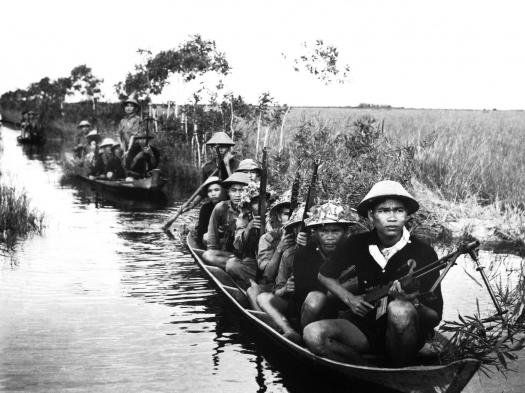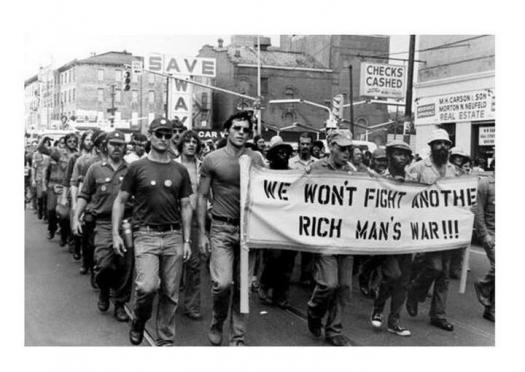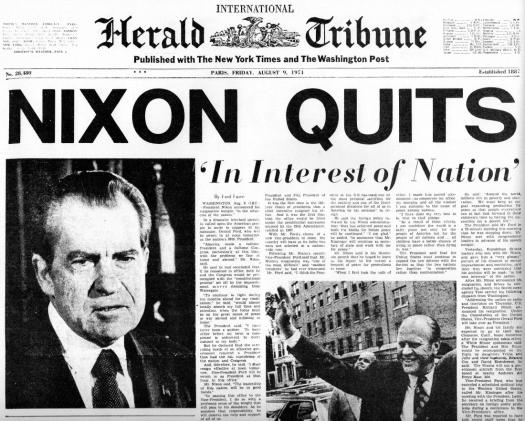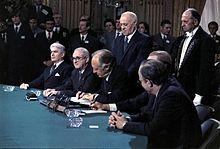The Vietnam War: Fast Facts

.
- 1.
Kennedy’s assassination in November ... brought his Vice President, ... to the presidency.
- A.
1955 - Harry S. Truman
- B.
1963 - Lyndon B. Johnson
- C.
1969- Richard Nixon
Correct Answer
B. 1963 - Lyndon B. JohnsonExplanation
In November, Kennedy's assassination brought Lyndon B. Johnson to the presidency.Rate this question:
-
- 2.
The French evacuated Vietnam in 1954 after the Geneva Accord which divided the country in two.
- A.
True
- B.
False
Correct Answer
A. TrueExplanation
The statement is true because the French did indeed evacuate Vietnam in 1954 after the Geneva Accord. The Geneva Accord was an agreement reached between France and Vietnam, which ended the First Indochina War and divided Vietnam into two separate countries: North Vietnam and South Vietnam. This agreement led to the withdrawal of French forces from Vietnam, marking the end of French colonial rule in the country.Rate this question:
-
- 3.
Lyndon B. Johnson officially declared war against North Vietnam in ...
- A.
1950
- B.
1955
- C.
1965
- D.
1970
Correct Answer
C. 1965Explanation
In 1965, Lyndon B. Johnson officially declared war against North Vietnam. This marked a significant escalation of the Vietnam War, as it involved direct military intervention by the United States. Prior to this, the U.S. had been providing military aid and advisors to South Vietnam, but the official declaration of war in 1965 signaled a more active and aggressive role in the conflict.Rate this question:
-
- 4.
The Cold War took place.... It is a clash between ...
- A.
After WWII - two ideologies: capitalism and communism
- B.
Before WWII - two countries: the USA and the USSR
- C.
After WWII - two religious communities: Muslims and Jews
Correct Answer
A. After WWII - two ideologies: capitalism and communismExplanation
The Cold War took place after WWII and was a clash between two ideologies: capitalism and communism. This conflict arose due to the ideological differences between the United States, which championed capitalism, and the Soviet Union, which advocated for communism. The Cold War was not a result of a clash between two countries or religious communities, but rather a political and ideological struggle between these two opposing systems.Rate this question:
-
- 5.
The domino theory in the USA was the belief that if one country falls to communism, other countries nearby will follow.
- A.
True
- B.
False
Correct Answer
A. TrueExplanation
The explanation for the given correct answer is that the domino theory was a widely held belief in the USA during the Cold War era. It suggested that if one country in a region became communist, neighboring countries would also fall to communism, like a row of dominoes. This theory influenced US foreign policy and led to interventions in countries such as Vietnam and Korea, as the US aimed to prevent the spread of communism.Rate this question:
-
- 6.
President Nixon was elected after Lyndon B. Johnson's presidency
- A.
In 1963
- B.
In 1965
- C.
In 1969
Correct Answer
C. In 1969Explanation
President Nixon was elected after Lyndon B. Johnson's presidency in 1969. This is because Lyndon B. Johnson served as the 36th President of the United States from 1963 to 1969. Therefore, Nixon's election would have taken place after Johnson's term ended in 1969.Rate this question:
-
- 7.
The USA fought against the communist guerilla forces of ... who were called ...
- A.
South Vietnam - South Vietnamese Army
- B.
North Vietnam - The Viet Cong
Correct Answer
B. North Vietnam - The Viet CongExplanation
During the Vietnam War, the USA fought against the communist guerilla forces of North Vietnam, who were called the Viet Cong. The Viet Cong was a guerrilla army that fought alongside the North Vietnamese Army against the South Vietnamese Army and the American forces. They were known for their effective use of guerilla tactics, such as ambushes and hit-and-run attacks, which posed a significant challenge to the American military. The conflict between the USA and the Viet Cong was a key aspect of the larger Vietnam War.Rate this question:
-
- 8.
In the US, many people protested against the war because of...
- A.
The draft : young men had to serve in the army, they had no choice.
- B.
The death of Vietnamese civilians and American soldiers
- C.
The imperialistic intentions of the USA
- D.
All of the above
Correct Answer
D. All of the aboveExplanation
Many people in the US protested against the war for multiple reasons. Firstly, the draft system compelled young men to serve in the army, leaving them with no choice in the matter. Secondly, the high number of Vietnamese civilian and American soldier casualties caused outrage and opposition to the war. Lastly, there was a belief that the US had imperialistic intentions, seeking to expand its influence through the war. Therefore, all of these factors contributed to the widespread protests against the war.Rate this question:
-
- 9.
Nixon was elected with the promise to start a policy of...
- A.
Vietnamization - a progressive withdrawal of US troops from Vietnam
- B.
Americanization - sending more US troops to Vietnam
Correct Answer
A. Vietnamization - a progressive withdrawal of US troops from VietnamExplanation
Nixon was elected with the promise to start a policy of Vietnamization, which involved a progressive withdrawal of US troops from Vietnam. This policy aimed to shift the responsibility for the war onto the South Vietnamese government and gradually reduce American involvement in the conflict. It was seen as a way to deescalate the war and allow the South Vietnamese to take a more active role in defending themselves.Rate this question:
-
- 10.
Richard Nixon had to resign after many scandals in 1974.
- A.
True
- B.
False
Correct Answer
A. TrueExplanation
Richard Nixon had to resign after many scandals in 1974. This is true. Nixon's presidency was marred by several scandals, most notably the Watergate scandal. The Watergate scandal involved a break-in at the Democratic National Committee headquarters, which was linked to Nixon's re-election campaign. As the investigation unfolded, it was revealed that Nixon had attempted to cover up the involvement of his administration in the break-in. Facing imminent impeachment, Nixon chose to resign from the presidency on August 8, 1974. This marked the first and only resignation of a U.S. president in history.Rate this question:
-
- 11.
American troops left Vietnam in... after the Paris Peace Agreement.
- A.
1968
- B.
1970
- C.
1973
- D.
1978
Correct Answer
C. 1973Explanation
American troops left Vietnam in 1973 after the Paris Peace Agreement. This agreement, signed in 1973, marked the end of direct U.S. military involvement in the Vietnam War. It called for a ceasefire and the withdrawal of American troops from Vietnam. The agreement aimed to achieve a political settlement between North Vietnam and South Vietnam, and allowed for the release of prisoners of war. Therefore, 1973 is the correct answer as it aligns with the historical event of the withdrawal of American troops from Vietnam.Rate this question:
-
Quiz Review Timeline +
Our quizzes are rigorously reviewed, monitored and continuously updated by our expert board to maintain accuracy, relevance, and timeliness.
-
Current Version
-
Sep 06, 2023Quiz Edited by
ProProfs Editorial Team -
Apr 18, 2018Quiz Created by
Amandineberchet
 Back to top
Back to top




